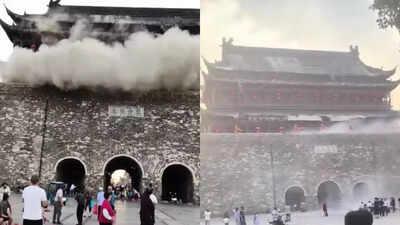In the annals of presidential landscaping, few transformations have sparked as much controversy and visual dismay as the dramatic metamorphosis of the White House Rose Garden under Donald Trump’s tenure. What was once a hallowed ground of horticultural elegance and historical significance became a canvas of contentious renovation, leaving many garden enthusiasts and historical preservationists stunned. The sweeping changes not only altered the physical landscape but also stirred a profound debate about architectural heritage and presidential stewardship. Through a compelling series of before-and-after photographs, the stark reality of this radical redesign emerges—revealing a narrative far more complex than a simple gardening update.In a stunning transformation that has left historians and gardening enthusiasts stunned, the once-pristine White House Rose Garden now stands as a testament to dramatic architectural and landscaping changes. During the Trump administration, the iconic outdoor space underwent a controversial renovation that fundamentally altered its historic character.
Meticulously cultivated for decades, the garden originally designed by Ellen Axson Wilson in 1913 and later refined by Jackie Kennedy in 1962, experienced a radical makeover in 2020. The renovation, overseen by then-First Lady Melania Trump, removed several mature crabapple trees that had been part of the garden’s landscape for generations.
Aerial photographs reveal a stark contrast between the lush, green environment that previously characterized the space and the more minimalist, structured design implemented during the renovation. The changes included removing historic trees, replacing traditional rose beds, and creating a more geometric layout that substantially deviated from the garden’s original aesthetic.
Landscape architects and preservationists were quick to criticize the transformation, arguing that the modifications erased decades of botanical and historical significance. The removal of century-old trees and the restructuring of carefully planned flowerbeds sparked intense debate about historical preservation and architectural integrity.
White House groundskeepers who had maintained the garden for generations expressed disappointment at the sweeping changes. Many noted that the previous design represented not just a horticultural space,but a living historical document that captured the essence of presidential legacies.
The renovation became a metaphorical depiction of the Trump administration’s approach to established institutions – replacing traditional structures with a more contemporary, controversial vision. Critics argued that the changes reflected a broader pattern of disrupting long-standing governmental norms and traditions.
Professional landscapers highlighted the ecological impact of removing mature trees, emphasizing the environmental significance of established green spaces.The before-and-after images dramatically illustrated the extent of the transformation, showing a marked shift from a naturalistic, verdant environment to a more structured, austere landscape.
Despite the controversy, supporters of the renovation argued that the new design offered a more streamlined, modern approach to the historic space. They praised the updated aesthetics and suggested that architectural evolution is a natural part of institutional progression.
The White House Rose Garden renovation remains a powerful symbol of the dramatic changes that occurred during the Trump presidency, serving as a visual metaphor for the administration’s broader approach to governmental and cultural institutions.

